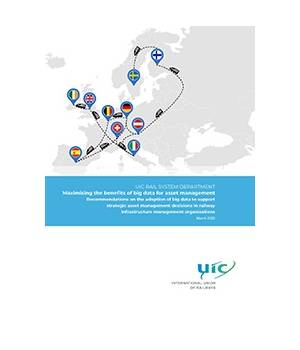
Maximising the benefits of big data for asset management
Big data is the new frontier for collecting and analysing data and for turning it into usable information. Big data is driven by the evolution of data analytics techniques, increased computational power, the dramatic reduction of storage device prices and the increased potential for collecting data due to technological progress. In several industrial sectors, companies are moving towards the analysis and exploitation of big data to extract meaningful insights on the phenomena of interest to support decision-making processes. Additionally, the green transition is challenging industrial companies to be more responsive to social and environmental needs. Big data could play a major role in this. Being able to anticipate societal behaviour evaluation and understanding the long-term effects of climate change are within the grasp of big data.
In the infrastructure sector, asset-intensive businesses involve significant capital investment, and the effective management of assets is essential for achieving business goals. In railways, infrastructure managers (IMs) have paid much attention to asset management (AM) in the last years. Indeed, for IM organisations, physical assets are core for providing service that can be measured through various outputs such as customer satisfaction, safety, sustainability (economical, environmental and societal) and availability. Asset management allows IM organisations to orchestrate railway networks distributed across different geographically dispersed regions. Moreover, AM enables the satisfaction of consistently multiple stakeholder requirements and expectations.
The formulation of strategies and objectives for asset portfolio management is challenging for railway infrastructure management organisations. In fact, there are different expectations among the various stakeholders and, consequently, different perceptions of asset value and the benefits that asset lifecycle management can achieve. Moreover, on the one hand, decision-making at the strategic level is inherently characterised by high uncertainty given the long-term reference horizon; and on the other hand, strategic and long-term decisions are those characterised by the highest CAPEX (Capital Expenditure) with a high impact on the organisations’ economic sustainability.
| Author | UIC |
| ISBN | 978-2-7461-3186-6 |
| Pages | 22 |
Data sheet
- Language
- English
- Format
- Downloadable
- Edition
- Ed. no.1
- Edition date
- 01/03/2022
- Publication date
- 25/05/2022
- Page number
- 22
- Theme
- Combined Transport Transport combiné
- sku
- 5-22002E-PDF
- Reference
- 5-22002E
 Cookie preferences
Cookie preferences

